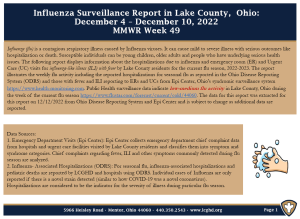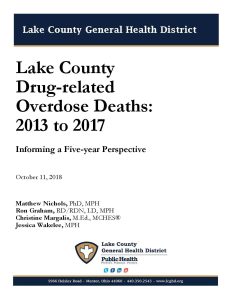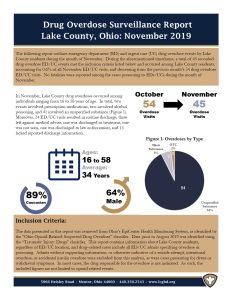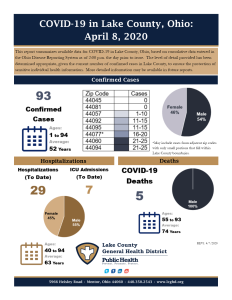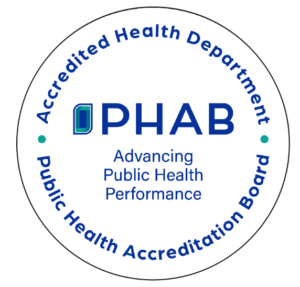This page contains health data used to inform the Lake County General Health District (LCGHD). This includes disease surveillance and other program-specific data reports released by LCGHD. In addition, it includes links to publicly available data sources where additional health data about Lake County can be found.
Opioid Dashboard
Health Topics
The Lake County General Health District releases regular reports regarding various public health concerns. Recent reports are organized by topic area below:
Influenza Surveillance
LCGHD has initiated seasonal flu surveillance beginning in April 2022. Hospitalizations for seasonal influenza and pediatric flu deaths are reportable conditions in Ohio. Flu cases are not reportable unless they are of a novel strain due to limited immunity and potential for an epidemic or pandemic (e.g. 2009 H1N1). Going forward, reports will be issued weekly during flu season, which runs approximately October through May. Influenza cases are reported by MMWR week, which runs Sunday through Saturday, and roughly aligns with the numbered week of the calendar year (Weeks 1-52).
Drug Surveillance
Lake County Drug-related Overdose Deaths: 2013-2017
Monthly Overdose Surveillance Reports:
This report, released monthly, provides information regarding visits to Emergency Rooms and Urgent Care centers by Lake County residents for suspected accidental drug overdose or poisoning. For information regarding other counties, please visit the Ohio Department of Health’s interactive dashboard, which provides maps and information on trends and demographics by county, Public Health Region, or statewide.
2019 Novel Coronavirus (COVID-19)
The following reports, released weekly from April 8, 2020 – June 11, 2021, and monthly after June 11, 2021 contain cumulative information regarding laboratory confirmed and probable cases of COVID-19 in Lake County as obtained from the Ohio Disease Reporting System. Up through January 2021, numbers reported reflect current data as of 2:00 p.m. the day prior to publication. These numbers may differ from those reported daily by the Ohio Department of Health (ODH) due to new cases accruing or being reclassified to another jurisdiction after ODH finalizes daily numbers. Beginning in February 2021, data is current up to 12:01 a.m. the day prior to publication to better align with state data archiving timelines.
For more information on COVID-19 in Ohio, visit the Ohio Department of Health’s Interactive Coronavirus Dashboards.
Protocol for Assessing Community Excellence in Environmental Health (PACE EH)
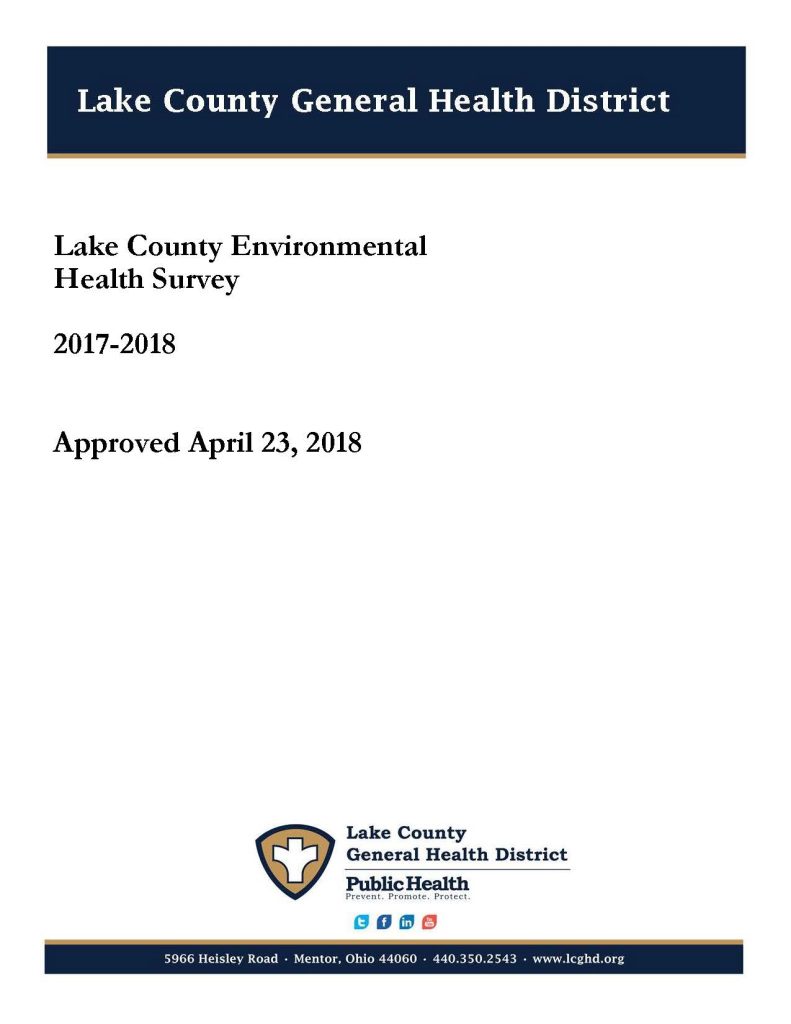
Health Data Sources
For those interested in exploring population health data to better understand or describe the health of communities a variety of publicly available data sources are provided below. Various sources provide data at the national, state, county, zip code, or census tract levels.
| Data Source | Description |
|---|---|
| Behavioral Risk Factor Surveillance System (BRFSS) | The world’s largest, ongoing telephone health survey system, tracking health conditions and risk behaviors in the United States yearly since 1984. Data are collected monthly in all 50 states, the District of Columbia, Puerto Rico, the US Virgin Islands, and Guam |
| Community Commons | Interactive mapping, networking, and learning utility for the broad-based healthy, sustainable, and livable communities’ movement |
| County Health Rankings & Roadmaps | Annual Rankings measure vital health factors, including high school graduation rates, obesity, smoking, unemployment, access to healthy foods, the quality of air and water, income inequality, and teen births in nearly every county in America. They provide a snapshot of how health is influenced by where we live, learn, work and play. |
| data.census.gov (U.S. Census/ American Community Survey) | Key source for population, housing, economic, and geographic information |
| Healthy Northeast Ohio (NEO) | Innovative platform brings non-biased data and local resources to a single, user-friendly location for partners in the Northeast Ohio region |
| Healthy People 2030 | data-driven national objectives to improve health and well-being over the next decade |
| KidsCount | Profiles the status of children on a national and state-by-state basis and ranks states on 10 measures of well-being |
| National Center for Health Statistics | Statistical information to guide actions and policies |
| Ohio Department of Health (ODH) Public Health Information Warehouse | Self-service online tool containing the most recent public health data available about Ohio |
| Pregnancy Risk Assessment Monitoring System (PRAMS) | State-specific, population-based data on maternal attitudes and experiences before, during, and shortly after pregnancy |
| Web-based Injury Statistics Query and Reporting System (WISQARS) | Interactive database system with customized reports of injury-related data |
| Wide-ranging ONline Data for Epidemiologic Research (WONDER) | Easy-to-use, menu-driven system that makes the information resources of the Centers for Disease Control and Prevention (CDC) available to public |

